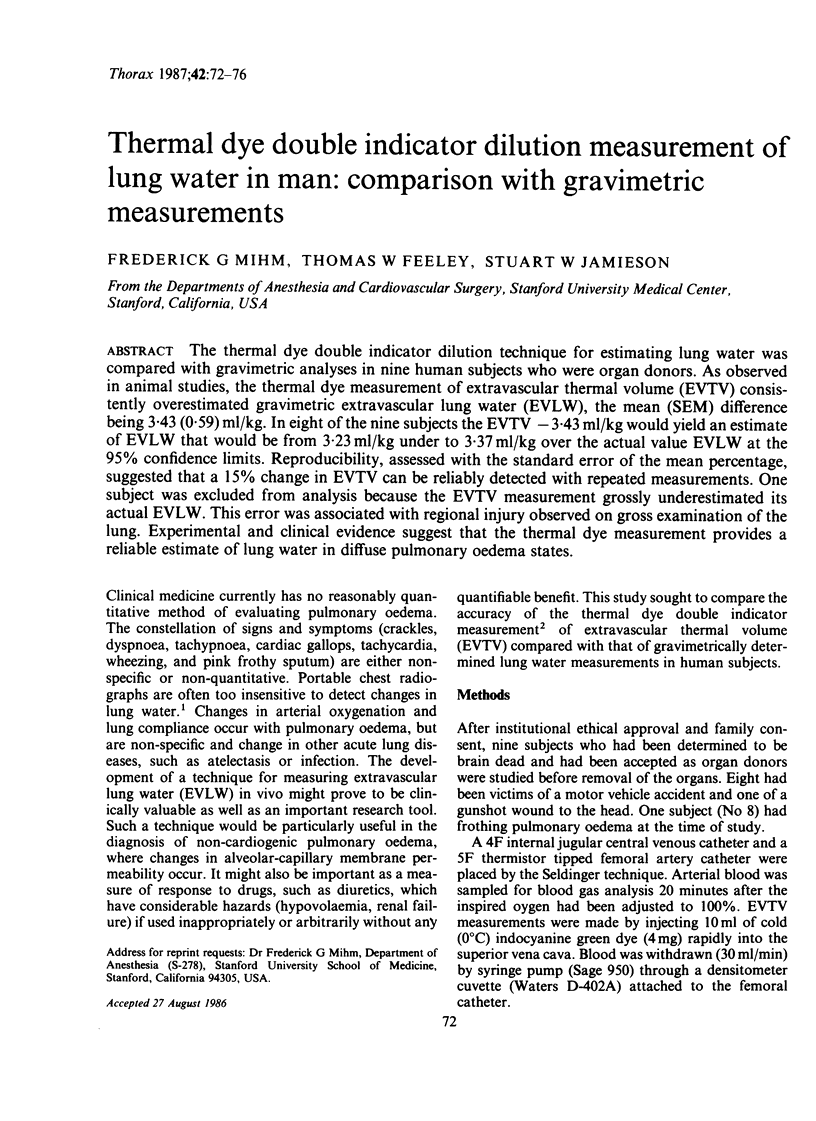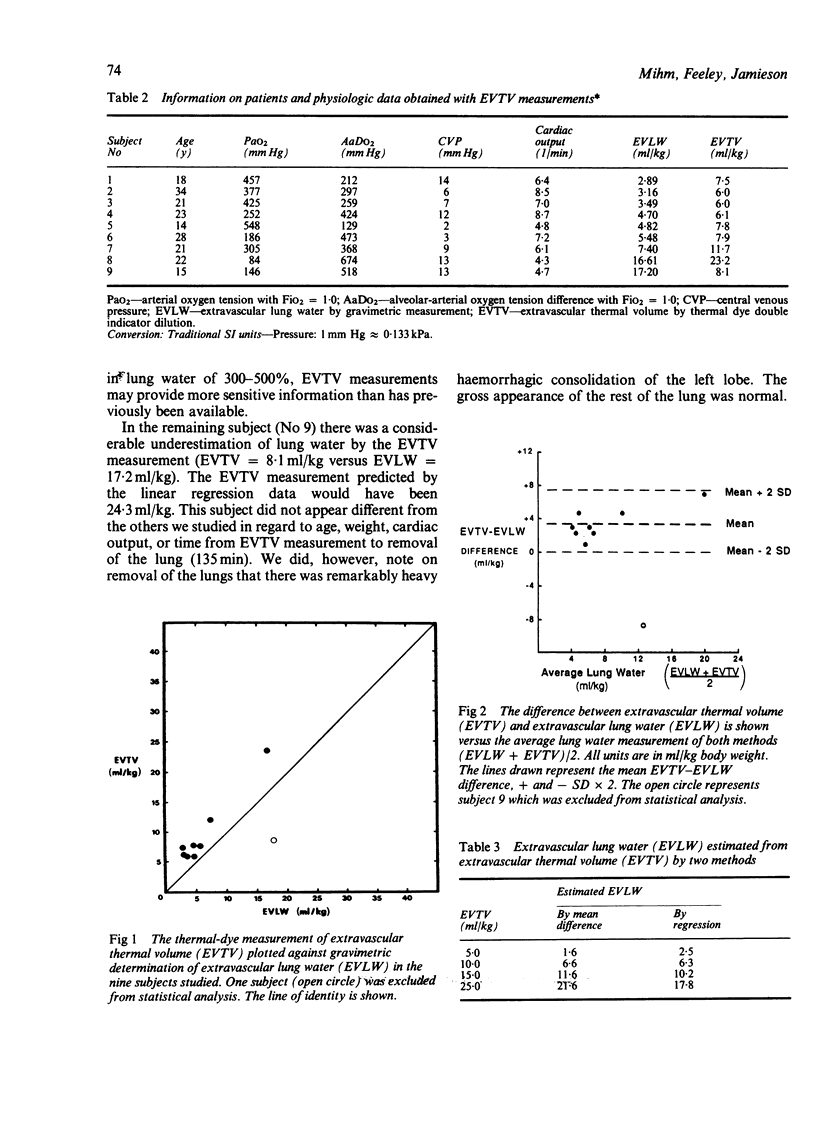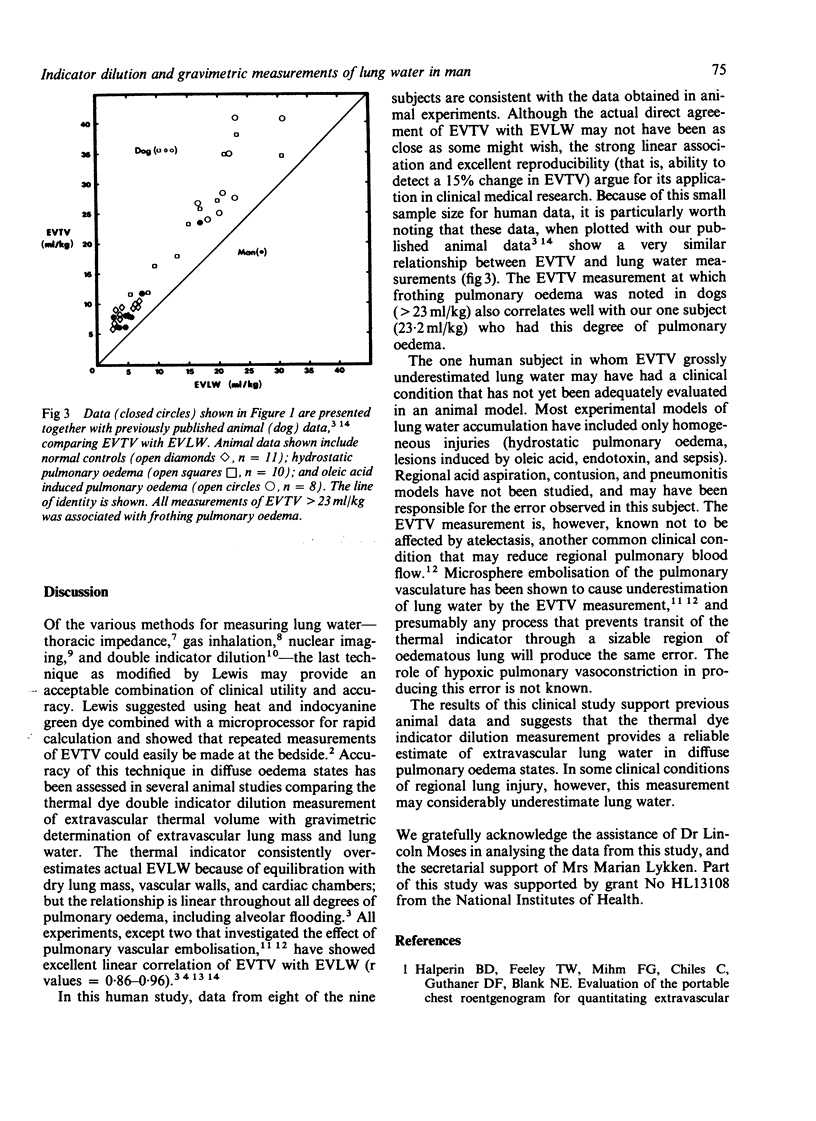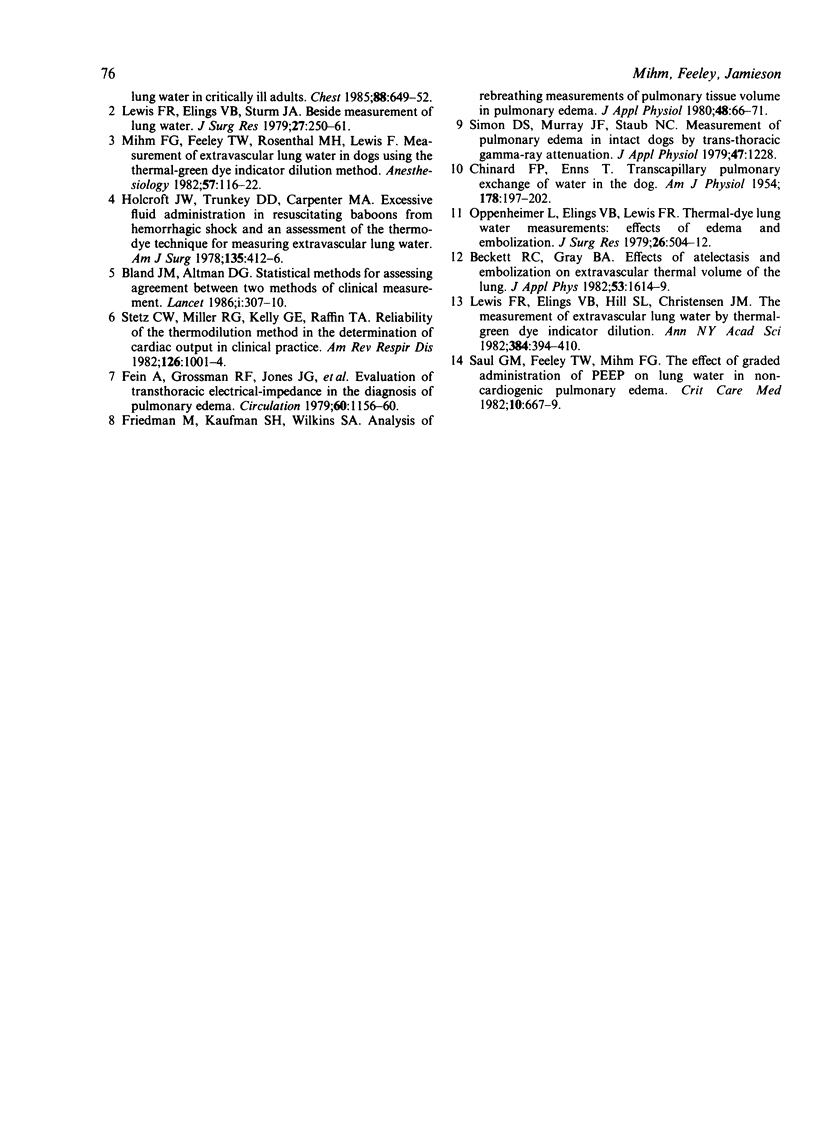Abstract
The thermal dye double indicator dilution technique for estimating lung water was compared with gravimetric analyses in nine human subjects who were organ donors. As observed in animal studies, the thermal dye measurement of extravascular thermal volume (EVTV) consistently overestimated gravimetric extravascular lung water (EVLW), the mean (SEM) difference being 3.43 (0.59) ml/kg. In eight of the nine subjects the EVTV -3.43 ml/kg would yield an estimate of EVLW that would be from 3.23 ml/kg under to 3.37 ml/kg over the actual value EVLW at the 95% confidence limits. Reproducibility, assessed with the standard error of the mean percentage, suggested that a 15% change in EVTV can be reliably detected with repeated measurements. One subject was excluded from analysis because the EVTV measurement grossly underestimated its actual EVLW. This error was associated with regional injury observed on gross examination of the lung. Experimental and clinical evidence suggest that the thermal dye measurement provides a reliable estimate of lung water in diffuse pulmonary oedema states.
Full text
PDF




Selected References
These references are in PubMed. This may not be the complete list of references from this article.
- Beckett R. C., Gray B. A. Effect of atelectasis and embolization on extravascular thermal volume of the lung. J Appl Physiol Respir Environ Exerc Physiol. 1982 Dec;53(6):1614–1619. doi: 10.1152/jappl.1982.53.6.1614. [DOI] [PubMed] [Google Scholar]
- Bland J. M., Altman D. G. Statistical methods for assessing agreement between two methods of clinical measurement. Lancet. 1986 Feb 8;1(8476):307–310. [PubMed] [Google Scholar]
- CHINARD F. P., ENNS T. Transcapillary pulmonary exchange of water in the dog. Am J Physiol. 1954 Aug;178(2):197–202. doi: 10.1152/ajplegacy.1954.178.2.197. [DOI] [PubMed] [Google Scholar]
- Fein A., Grossman R. F., Jones J. G., Goodman P. C., Murray J. F. Evaluation of transthoracic electrical impedance in the diagnosis of pulmonary edema. Circulation. 1979 Nov;60(5):1156–1160. doi: 10.1161/01.cir.60.5.1156. [DOI] [PubMed] [Google Scholar]
- Friedman M., Kaufman S. H., Wilkins S. A., Jr Analysis of rebreathing measurements of pulmonary tissue volume in pulmonary edema. J Appl Physiol Respir Environ Exerc Physiol. 1980 Jan;48(1):66–71. doi: 10.1152/jappl.1980.48.1.66. [DOI] [PubMed] [Google Scholar]
- Halperin B. D., Feeley T. W., Mihm F. G., Chiles C., Guthaner D. F., Blank N. E. Evaluation of the portable chest roentgenogram for quantitating extravascular lung water in critically ill adults. Chest. 1985 Nov;88(5):649–652. doi: 10.1378/chest.88.5.649. [DOI] [PubMed] [Google Scholar]
- Holcroft J. W., Trunkey D. D., Carpenter M. A. Excessive fluid administration in resuscitating baboons from hemorrhagic shock, and an assessment of the thermodye technic for measuring extravascular lung water. Am J Surg. 1978 Mar;135(3):412–416. doi: 10.1016/0002-9610(78)90076-4. [DOI] [PubMed] [Google Scholar]
- Lewis F. R., Elings V. B., Hill S. L., Christensen J. M. The measurement of extravascular lung water by thermal-green dye indicator dilution. Ann N Y Acad Sci. 1982;384:394–410. doi: 10.1111/j.1749-6632.1982.tb21388.x. [DOI] [PubMed] [Google Scholar]
- Lewis F. R., Elings V. B., Sturm J. A. Bedside measurement of lung water. J Surg Res. 1979 Oct;27(4):250–261. doi: 10.1016/0022-4804(79)90138-0. [DOI] [PubMed] [Google Scholar]
- Mihm F. G., Feeley T. W., Rosenthal M. H., Lewis F. Measurement of extravascular lung water in dogs using the thermal-green dye indicator dilution method. Anesthesiology. 1982 Aug;57(2):116–122. doi: 10.1097/00000542-198208000-00009. [DOI] [PubMed] [Google Scholar]
- Oppenheimer L., Elings V. B., Lewis F. R. Thermal-dye lung water measurements: effects of edema and embolization. J Surg Res. 1979 May;26(5):504–512. doi: 10.1016/0022-4804(79)90041-6. [DOI] [PubMed] [Google Scholar]
- Saul G. M., Feeley T. W., Mihm F. G. Effect of graded administration of PEEP on lung water in noncardiogenic pulmonary edema. Crit Care Med. 1982 Oct;10(10):667–669. doi: 10.1097/00003246-198210000-00010. [DOI] [PubMed] [Google Scholar]
- Simon D. S., Murray J. F., Staub N. C. Measurement of pulmonary edema in intact dogs by transthoracic gamma-ray attenuation. J Appl Physiol Respir Environ Exerc Physiol. 1979 Dec;47(6):1228–1233. doi: 10.1152/jappl.1979.47.6.1228. [DOI] [PubMed] [Google Scholar]
- Stetz C. W., Miller R. G., Kelly G. E., Raffin T. A. Reliability of the thermodilution method in the determination of cardiac output in clinical practice. Am Rev Respir Dis. 1982 Dec;126(6):1001–1004. doi: 10.1164/arrd.1982.126.6.1001. [DOI] [PubMed] [Google Scholar]


